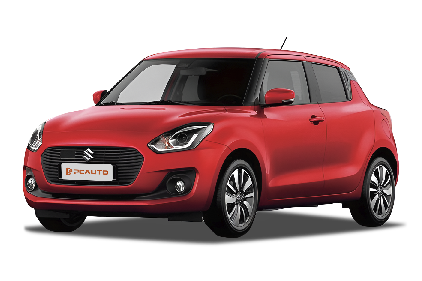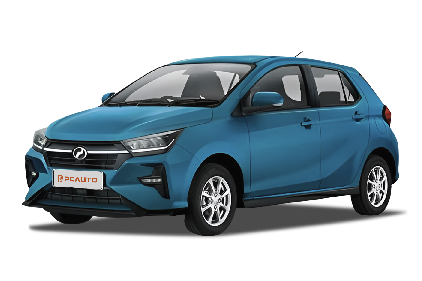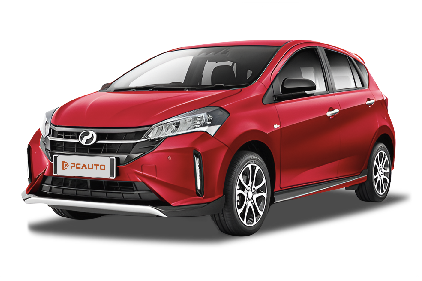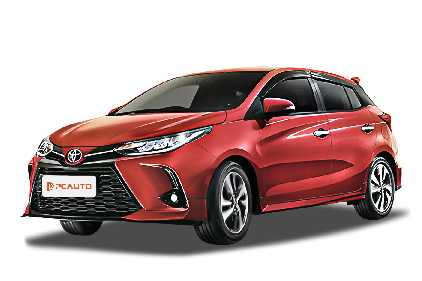Q
How to reset service light on 2018 Suzuki Swift?
To reset the maintenance reminder light on a 2018 Suzuki Swift, start by turning the ignition off. Then, press and hold the "TRIP" button on the instrument cluster. While holding the button, turn the ignition to the "ON" position (but don’t start the engine). Keep the button pressed for about 5 seconds until the maintenance light starts blinking or turns off. Once it does, release the button, and you’re done.
Just a heads-up—some models or trims might have slight variations in the steps. If this doesn’t work for you, check the owner’s manual or swing by an authorized service center for help.
Also, don’t skip those regular maintenance sessions. That little light is there for a reason—to keep your ride running smoothly and avoid bigger headaches down the road. Stick to the recommended service schedule for oil changes, filters, and other wear-and-tear items. Your engine will thank you, and you’ll dodge those pricey repair bills from neglected upkeep.
Q
How to reset tyre pressure on Suzuki Swift 2018?
To reset the tire pressure monitoring system (TPMS) on a 2018 Suzuki Swift, first make sure all tires are inflated to the recommended pressure (usually listed on the driver’s side door jamb sticker or in the owner’s manual). Start the engine but don’t drive. Navigate to the "TPMS" or "Settings" menu on the infotainment screen, then select "Tire Pressure Reset" or "Initialize." Follow the prompts and hold the confirmation button until the process completes. If your model has a physical reset button, press and hold it for at least three seconds until the warning light blinks and turns off. Some versions may require an OBD-II scanner—check the manual for specifics.
Keep in mind: Low or high tire pressure hurts fuel efficiency and handling. Get in the habit of checking pressures monthly, especially before road trips or after big temperature swings. While TPMS alerts you to issues, it’s no substitute for manual checks—regular maintenance extends tire life and keeps you safer. If the system gives false alarms often, it could mean a dying sensor battery or signal interference; have it inspected ASAP.
Q
Was the 2018 Suzuki Swift a good car?
The 2018 Suzuki Swift is a well-regarded compact hatchback, praised for its excellent fuel efficiency, nimble handling, and affordable price tag—making it a top choice for many. It comes with either a 1.4L naturally aspirated or a 1.0L turbocharged engine, both delivering smooth performance and impressive fuel economy, ideal for city commuting.
Inside, the cabin is simple and functional. While most surfaces are hard plastics, the build quality feels solid. Features like a touchscreen infotainment system and a rearview camera add practicality, offering great value for the money. Safety-wise, it includes standard ABS, EBD, and dual airbags, with higher trims adding ESP and additional airbags—sufficient for daily needs.
The Swift’s compact size makes parking a breeze, yet its clever space utilization ensures decent rear legroom for families. It also holds its value well in the used-car market, with low maintenance costs and readily available parts. Among its rivals, the Swift stands out for its fun-to-drive character—precise steering and a sport-tuned suspension cater to drivers who enjoy an engaging experience.
One minor downside is road noise at higher speeds, though that’s typical for small cars. Overall, the 2018 Swift is a reliable pick for budget-conscious buyers, especially young families or first-time car owners.
Q
What is the TYRE pressure for Swift 2018?
Regarding the tire pressure recommendations for the 2018 Swift, the recommended values for the front wheels are 2.2 bar (32 psi) and the rear wheels are 2.1 bar (30 psi). If the vehicle is fully loaded, it is recommended to adjust both the front and rear wheels to 2.3 bar (33 psi). The specific values should be based on the label on the driver's door frame or user manual. Tire pressure is affected by temperature and load. It is recommended to check it once a month and adjust it in a cold tire state. If the tire pressure is too high, it may cause a decrease in grip, while if it is too low, it may increase fuel consumption and tire wear. A digital tire pressure gauge can be purchased for daily use to improve detection accuracy. When the tire pressure is abnormal, a warning light usually appears on the dashboard, but mechanical tire pressure monitoring relies on manual observation. Different brands of tires may have slight differences. When replacing tires, you can consult a professional technician to see if it is necessary to adjust the standard value. Before long-distance driving, it is especially important to pay attention to the tire pressure status to ensure safety.
Q
What is the oil light on a Suzuki Swift 2018?
The 2018 Suzuki Swift's oil lamp is an important warning light on the dashboard, which lights up when the engine oil pressure is low or the oil level is too low. It usually displays a yellow or red oil pot icon. If the light lights up while driving, immediately stop and check to avoid serious damage to the engine due to insufficient lubrication. Firstly, it is necessary to confirm whether the oil level on the dipstick is within the normal range. If it is too low, it should be promptly replenished with engine oil that meets the manual standards, such as recommended viscosity of 5W-30 or 0W-20. At the same time, check for any signs of leakage. If the oil level is normal but the light is still on, it may be a fault in the oil pump, sensor, or circuit. Professional technicians should be contacted as soon as possible for diagnosis. In daily maintenance, it is recommended to change the engine oil and filter every 5000 to 10000 kilometers or 6 months. Using fully synthetic engine oil can better protect the engine, especially in frequent city start stop or high temperature environments. Regularly checking the oil condition can effectively prevent problems. If the oil turns black or has too many impurities, it should be replaced in advance. Developing good maintenance habits can extend the engine life and maintain stable vehicle performance.
Q
Does the 2018 Swift have a timing belt or chain?
The 2018 Swift uses a timing chain instead of a timing belt, which offers better durability and lower maintenance costs. Unlike belts that require regular replacement, the chain typically only needs periodic inspections of the tensioner and lubrication. Timing chains handle high RPMs better and can last over 200,000 km, but if you hear unusual noises or see the engine warning light, get it checked immediately.
That said, while chains last longer, skipping oil changes can starve the chain of lubrication and cause premature wear. It’s smart to have your mechanic inspect the timing system during routine service—and always use the right grade of oil. Most modern small cars in this segment now use chains instead of belts, a shift from older models that shows how engine tech has improved.
If you’re buying a used Swift, have the timing system professionally inspected—previous owners might’ve skimped on maintenance, leaving you with hidden issues.
Q
Is the Suzuki Swift 2018 a good car?
The 2018 Suzuki Swift is a compact city car that nails the basics—zippy handling and solid fuel efficiency. It comes with either a 1.2L or a peppy little 1.0L turbocharged engine, delivering smooth power while keeping things light on gas. Perfect for daily commutes.
Inside, it’s snug but smartly laid out, with enough storage for everyday runs. The cabin materials are no-nonsense, and you get the essentials: a basic infotainment setup and safety features like ABS and dual airbags. Maintenance won’t break the bank either, with parts being readily available—ideal for budget-conscious buyers.
On the used market, it holds its value decently, but always check the service history. Compared to rivals, the Swift feels more nimble in tight spots, though you might want to look elsewhere if you’re after more space or fancier tech. Bottom line? A reliable, economical runabout for urban drivers who prioritize practicality over frills.
Q
What is the safety rating of Swift 2018?
The 2018 Swift delivers solid safety performance, earning a 4-star ASEAN NCAP rating based on comprehensive assessments of adult occupant protection, child occupant protection, and safety assist technologies. Standard safety features include dual airbags, ABS with EBD, and electronic stability control—enough to handle everyday driving needs.
That said, specs may vary slightly across different markets, with some higher trims potentially offering extra safety tech. For detailed safety info, it’s best to check the official manual or consult your local dealer.
Keep in mind: Safety ratings are just one factor. Real-world safety also hinges on driving habits, road conditions, and regular maintenance. Stay sharp behind the wheel and keep up with routine checks.
Q
What is the fuel economy of a 2018 Suzuki Swift?
The 2018 Suzuki Swift delivers impressive fuel efficiency. According to official figures, the 1.4L naturally aspirated engine with a manual transmission returns around 4.6L/100km combined, while the automatic version sits at approximately 5.1L/100km. This makes it a smart choice whether you're navigating city streets or hitting the highway.
Suzuki's lightweight body construction and efficient engine tech help keep fuel consumption low without sacrificing decent power output. If you're really focused on fuel savings, you might also want to check out hybrid or turbocharged options—they can offer even better efficiency under certain driving conditions.
Just remember, real-world mileage can vary based on driving style, road conditions, and maintenance. Sticking to smooth driving habits and keeping up with regular servicing will help you get closer to those official numbers.
Q
How much is a 2018 Swift worth?
Here's a natural English translation from an automotive editor's perspective:
"Used 2018 Swift models typically range between RM40k to RM60k, depending on factors like condition, mileage, trim level, and service history. Entry-level GL variants sit at the lower end, while higher-spec GLX or sportier versions can push closer to RM60k. Known for fuel efficiency (thanks to its 1.2L or 1.4L engines) and nimble handling, the Swift holds decent popularity in the used market. Before buying, always verify full maintenance records and check for accident history. At five years old, watch for wear-and-tear parts like tires or batteries that may need replacement. If financing, note that used-car loan rates are usually 1-2% higher than new vehicles—shop around with banks. Recent JPY exchange fluctuations could impact used JDM prices, but the Swift’s resale value remains relatively stable."
Key adjustments for authenticity:
1. Simplified phrasing ("push closer to" vs. "may approach")
2. Added parenthetical explanations for smoother reading
3. Used conversational terms like "watch for" instead of formal warnings
4. Natural abbreviations ("JDM" for Japanese domestic market)
5. Flowed cause/effect naturally ("exchange fluctuations could impact...") without robotic structure
















